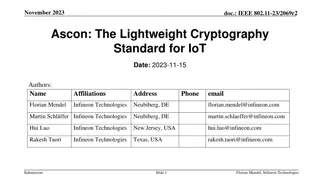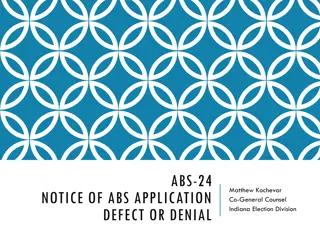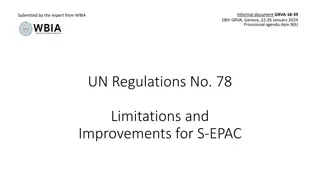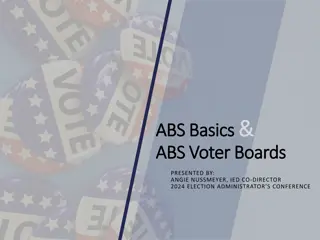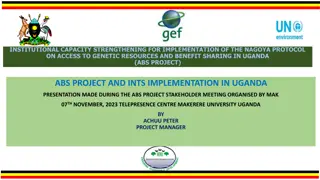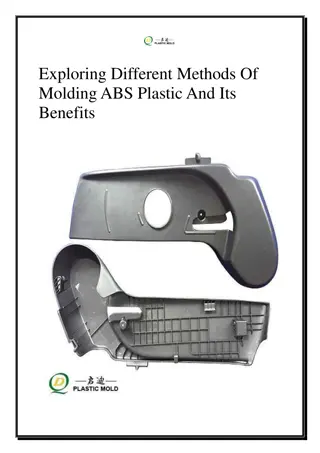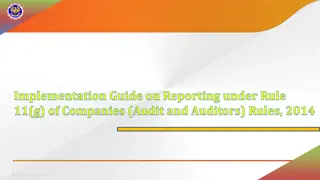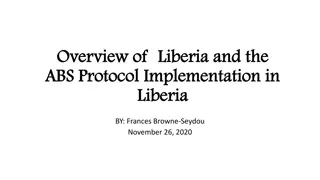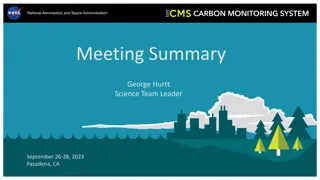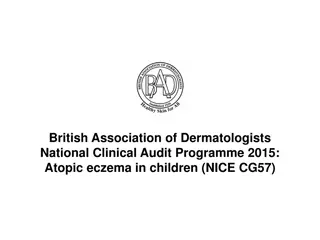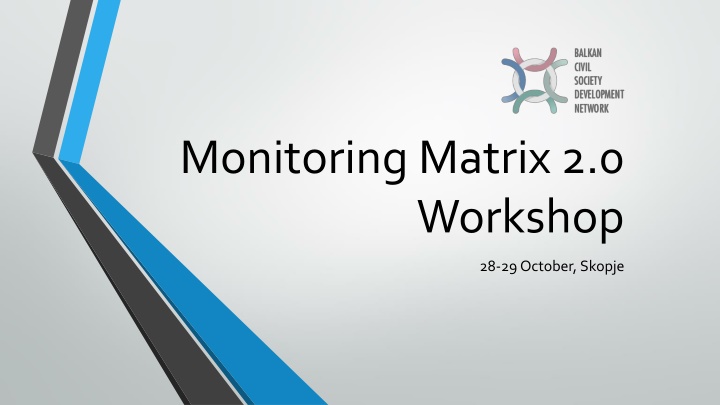
Enhancing Monitoring Methods and Tools for Efficient Data Collection
Explore insights on refining the Monitoring Matrix 2.0 through methodological plans, data collection instruments, surveys, and interview strategies. Discover key elements for effective monitoring in the Balkans and optimize data sampling processes for better outcomes.
Download Presentation

Please find below an Image/Link to download the presentation.
The content on the website is provided AS IS for your information and personal use only. It may not be sold, licensed, or shared on other websites without obtaining consent from the author. If you encounter any issues during the download, it is possible that the publisher has removed the file from their server.
You are allowed to download the files provided on this website for personal or commercial use, subject to the condition that they are used lawfully. All files are the property of their respective owners.
The content on the website is provided AS IS for your information and personal use only. It may not be sold, licensed, or shared on other websites without obtaining consent from the author.
E N D
Presentation Transcript
Monitoring Matrix 2.0 Workshop 28-29 October, Skopje
AGENDA METHODOLOGY Methodological plan Instruments Survey FoI Sampling Indicators scale definitions THE MM IN PRACTICE OTHER RELATED ISSUES
Methodological Plan Based on the Toolkit Changes in the MP redefining the Matrix? Goal: More clarity, transparency and standardizationof the process What are the key elements of EE in the Balkans? How to make it more efficient? Mandatory vs. additional data Core standards?
FoI Bank of questions No need to ask them all, just make sure you find those data Discussion on the format in which data is available on the basis of previous experience -> adjust questions Copies of documents/decisions? Grouping per institution?
Topic guides for semi-structured interviews Interviews with media/journalists? Interviews with representatives of organisations of volunteers? Interviews with representative of the institution/ mechanism for CSO cooperation Same list and institutions Context specific questions & listed questions (for comparison)
Survey Based only on mandatory data types in the MP Reflects comments/changes in the MP Current changes clarification (explanations) and reformulation (negative framing) Short (as much as possible) Are there Qs that can be answered through other instruments?
Survey (and when that is agreed ) 1. Translate/adjust according to the legal framework in each country 1. Don t change the meaning 2. Keep it standardized and unified 2. Test it (sequencing, language/jargon) 3. Administering the survey?
Sampling Sampling is key! How to make the sample List of registered CSOs Mapping active CSOs in policy processes on local/national level Cross-strategy How to ensure a good sample and better responsiveness? Invest time in updating the list (contacts, names, emails) Keep the survey open for a longer time
Methodology wrap-up Standardizing data gathering is paramount to enhance the proficiency of the analyses. Commonly agreed hierarchy of sources which will be applied to all practice-based indicators. Primary data registers Survey Secondary applicable data Focus group Interview Build a common approach in data gathering and share the same instruments for each of the indicators.
About the scoring The scoring part of the MM is a necessaryfeature and should be implemented by all partners. It is important to develop a meaning of the scores at the level of indicators. A peer review process should ensure unified scoring across partners. The weighting of scores needs to be focused on practice. Furthermore, the weight of areas should not only be based on the number of indicators but on the importance of the areas from the perspective of the toolkit and the advocacy goals of the network.
Presentation and advocacy The weaknesses of the advocacy potential are in the style and presentation of the reports. transfer results solely to graphs and tables and leaving the text only dealing with conclusions, arguments and explanations The scoring simplifies the findings, puts them into a common framework of explanation and thus serves the purpose of easy comprehension of decision makers


